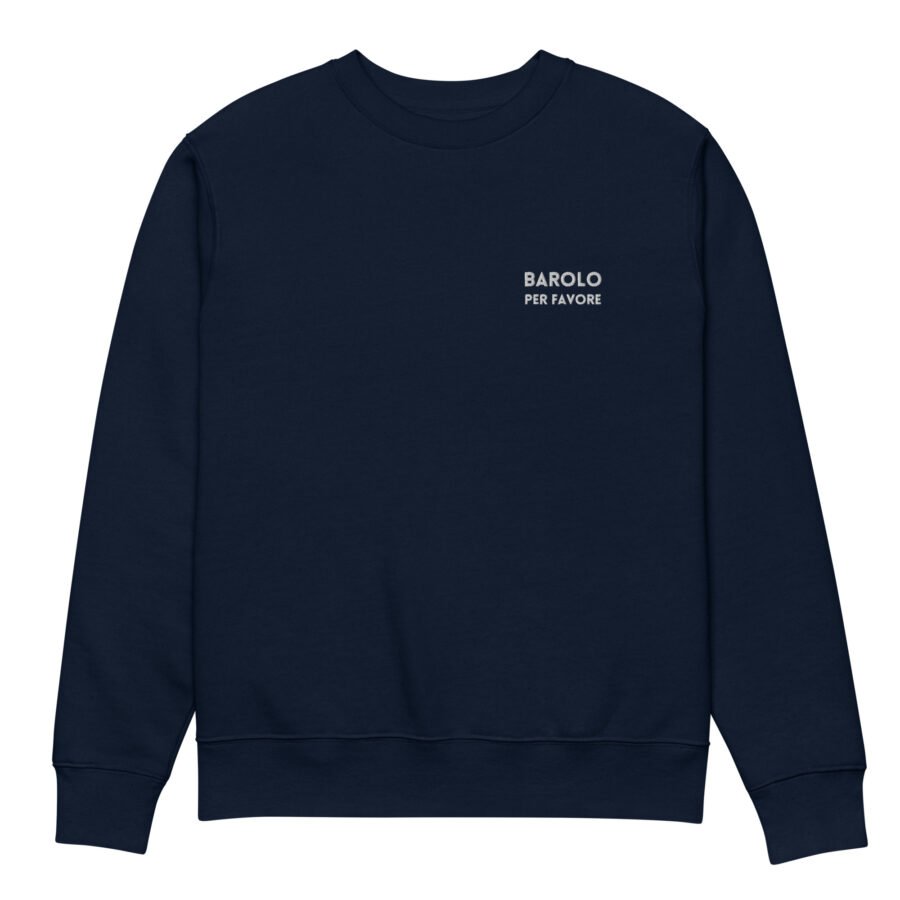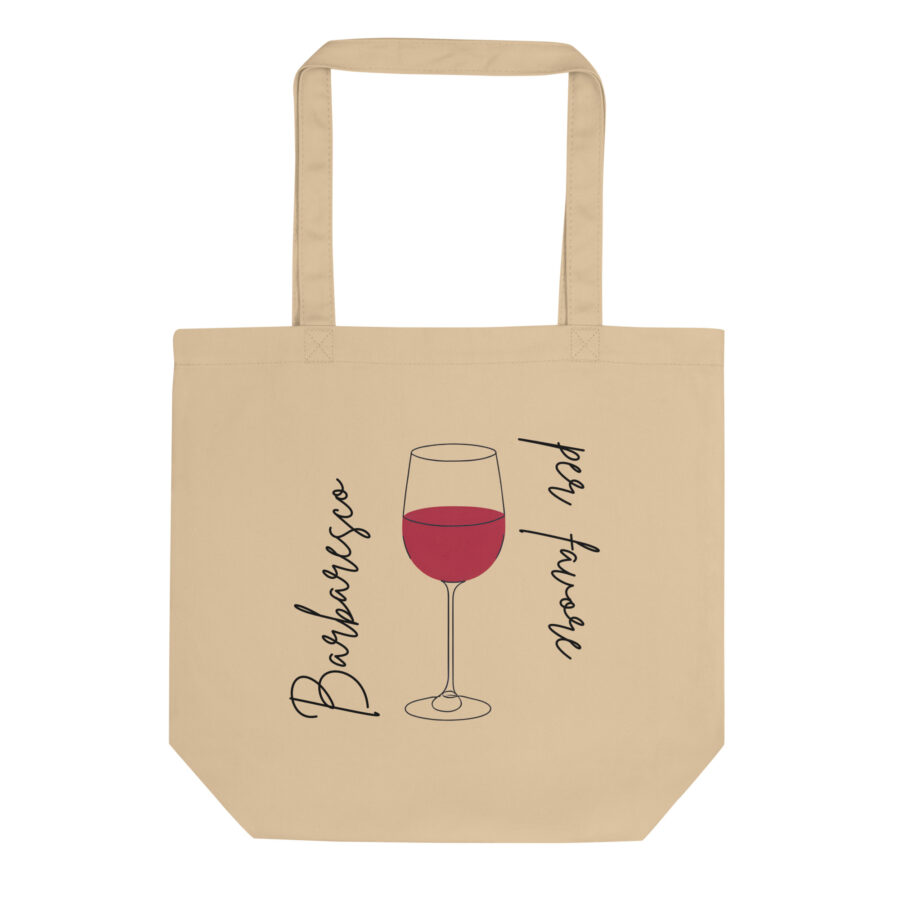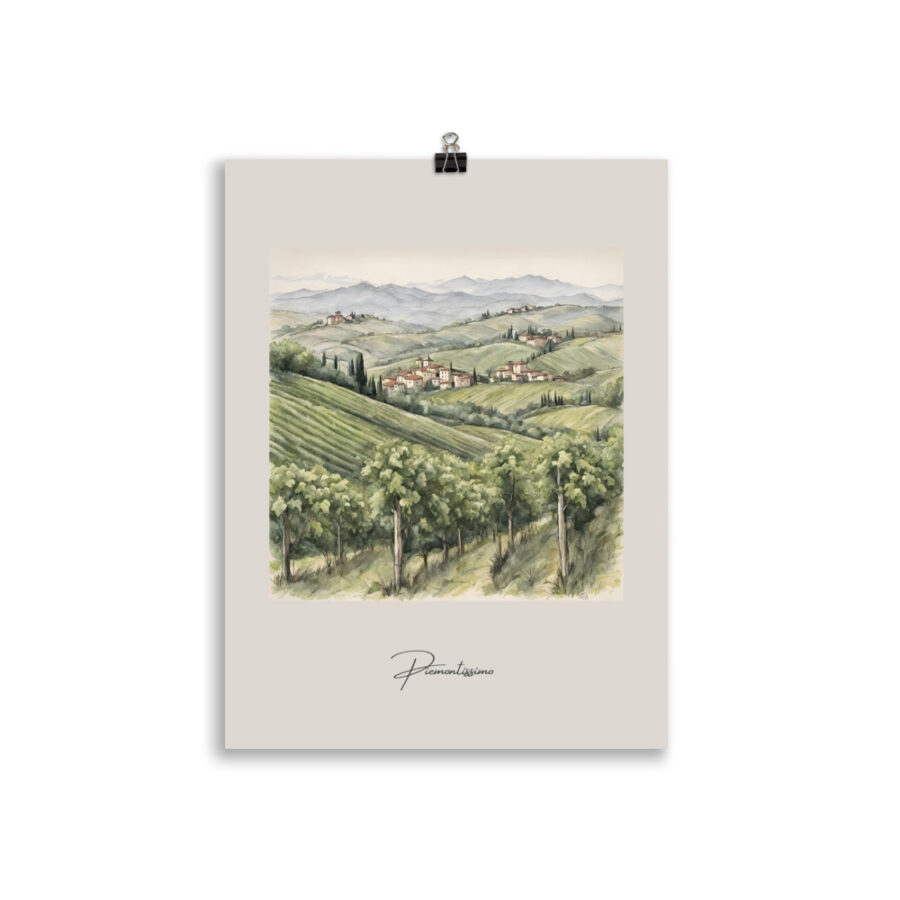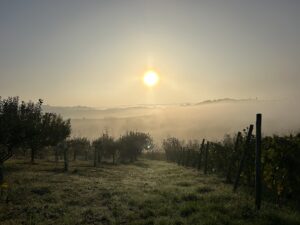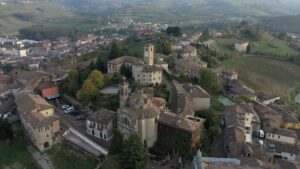PIEMONTISSIMO READING
Langhe, Roero, and Monferrato
The 3 Different Zones of Piemonte to Discover

Piedmont (Piemonte), nestled in the northwestern corner of Italy, is a region brimming with rolling hills, lush vineyards, and centuries-old traditions. Within this region, three unique areas; Langhe, Roero, and Monferrato, stand out for their distinct landscapes, culinary treasures, and cultural heritage. Together, these UNESCO-listed territories form a captivating mosaic of experiences. Let’s dive into what makes each zone a must-visit destination.
Langhe: The Land of Barolo and Truffles
The Langhe region, located around Alba, is a paradise for food and wine enthusiasts. Renowned worldwide for its Barolo and Barbaresco wines, Langhe is the beating heart of Piedmont (Piemonte)’s viticulture.
What’s Piemontissimo:
- Wine Culture: Langhe is synonymous with Nebbiolo grapes, producing some of the most celebrated red wines globally. Touring the wineries and tasting rooms in villages like La Morra, Barolo, and Serralunga d’Alba is a quintessential experience.
- Truffle Season: Every autumn, Alba hosts the International White Truffle Fair, drawing gourmands from around the globe. Join a truffle-hunting expedition to experience the thrill of finding these culinary gems.
- Scenic Beauty: The landscape is dotted with medieval castles and charming hilltop villages. Don’t miss the panoramic views from the Barolo Castle or the winding roads that lead to picturesque hamlets.
Langhe is an ideal destination for indulging in luxurious gastronomy and soaking in serene vineyard vistas.
Roero: A Hidden Gem of Biodiversity
To the north of Alba lies Roero, a region that often takes a backseat to its famous neighbours but boasts an equally enchanting allure. Known for its sandy soils and rich biodiversity, Roero offers a different take on Piedmont (Piemonte)’s charm.
What’s Piemontissimo:
- Wine Specialties: Roero is famous for its Arneis, a crisp and aromatic white wine. It’s a refreshing contrast to the heavier reds of Langhe.
- Unique Geography: The Roero Rocks (“Rocche del Roero”) are dramatic gullies and cliffs carved by erosion. These geological formations create a rugged beauty and are ideal for hiking and photography.
- Gastronomy: Fresh produce thrives in Roero’s fertile lands, making it a haven for seasonal delicacies like asparagus, peaches, and honey.
- Villages with Character: Small towns like Canale and Govone offer a glimpse into authentic Piedmont (Piemonte)ese life, complete with local festivals and historic landmarks.
Roero invites visitors to slow down and connect with nature, making it a tranquil escape.
Monferrato: A Journey Through History and Vineyards
East of Langhe and Roero lies Monferrato, a region steeped in history and renowned for its sprawling vineyards and historic estates. Its diverse offerings make it a haven for culture enthusiasts and wine lovers alike.
What’s Piemontissimo:
- Asti and Alessandria: These two main cities act as cultural hubs. Asti is celebrated for its sparkling wines and the historic Palio di Asti, one of Italy’s oldest horse races.
- Wine Varieties: Monferrato produces a rich array of wines, including Moscato d’Asti, Barbera, and Grignolino. Visiting the underground wine cathedrals of Canelli, a UNESCO World Heritage Site, is a must.
- Historic Landmarks: Monferrato’s landscape is adorned with ancient castles, such as the Castle of Giarole and the Castle of Casale Monferrato.
- Thermal Spas: Acqui Terme, a historic spa town, offers rejuvenation with its natural thermal springs.
Monferrato’s combination of cultural depth and natural beauty ensures a well-rounded experience for travelers.
Food and Wine Trails Across the Three Zones
Each of these regions—Langhe, Roero, and Monferrato—is a culinary and vinous treasure trove. Exploring the food and wine trails across these zones allows visitors to savor Piedmont (Piemonte)’s essence.
What’s Buonissimo:
- Cheese and Charcuterie: Sample local specialties like Robiola, Castelmagno, and Piedmont (Piemonte)ese beef.
- Traditional Dishes: Indulge in tajarin pasta with truffles, agnolotti del plin, and vitello tonnato.
- Sweet Treats: Don’t miss desserts like hazelnut cakes, panna cotta, and bônet, a traditional chocolate pudding.
- Pairings: Enjoy the perfect pairing of wines with these regional delicacies, enhancing the gastronomic journey.
When to Visit and How to Plan
The best time to explore these regions is during spring and autumn. Spring brings blooming landscapes and pleasant weather, while autumn offers harvest festivals and the much-anticipated truffle season.
Travel Tips:
- Transportation: Renting a car is the most convenient way to explore these regions, as many attractions are tucked away in the countryside.
- Accommodation: Agriturismi (farm stays) offer a unique and immersive lodging experience, often accompanied by home-cooked meals.
- Guided Tours: Consider joining a guided wine or truffle tour for insider access and a deeper understanding of the regions.
Langhe, Roero, and Monferrato each bring their unique flavors and landscapes to the table, making Piedmont (Piemonte) a destination of endless discoveries. Whether you’re savoring Barolo in the Langhe, hiking through Roero’s rugged terrain, or exploring Monferrato’s historic vineyards, these regions promise unforgettable memories. With its perfect blend of culture, nature, and gastronomy, Piedmont (Piemonte) invites you to experience the very essence of Italian living. It’s Piemontissimo!
-
Clothing
Barolo per favore Embroidered Sweatshirt
649,00 kr This product has multiple variants. The options may be chosen on the product page -
Corduroy Caps
Piemontissimo Corduroy Cap
349,00 kr This product has multiple variants. The options may be chosen on the product page -
Wall Art
Poster – Piemonte rolling hills beige
279,00 kr – 389,00 kr This product has multiple variants. The options may be chosen on the product page

